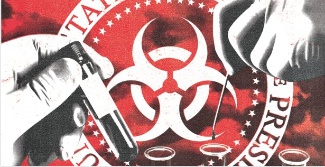

By Andrew Hessel, Marc Goodman and Steven Kotler
This is how the future arrived. It began innocuously, in the early 2000s, when businesses started to realize that highly skilled jobs formerly performed in-house, by a single employee, could more efficiently be crowd-sourced to a larger group of people via the Internet. Initially, we crowd-sourced the design of T?shirts (Threadless.com) and the writing of encyclopedias (Wikipedia.com), but before long the trend started making inroads into the harder sciences. Pretty soon, the hunt for extraterrestrial life, the development of self-driving cars, and the folding of enzymes into novel proteins were being done this way. With the fundamental tools of genetic manipulation—tools that had cost millions of dollars not 10 years earlier—dropping precipitously in price, the crowd-sourced design of biological agents was just the next logical step.
In 2008, casual DNA-design competitions with small prizes arose; then in 2011, with the launch of GE’s $100 million breast-cancer challenge, the field moved on to serious contests. By early 2015, as personalized gene therapies for end-stage cancer became medicine’s cutting edge, virus-design Web sites began appearing, where people could upload information about their disease and virologists could post designs for a customized cure. Medically speaking, it all made perfect sense: Nature had done eons of excellent design work on viruses. With some retooling, they were ideal vehicles for gene delivery.
Soon enough, these sites were flooded with requests that went far beyond cancer. Diagnostic agents, vaccines, antimicrobials, even designer psychoactive drugs—all appeared on the menu. What people did with these bio-designs was anybody’s guess. No international body had yet been created to watch over them.
